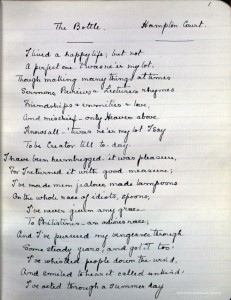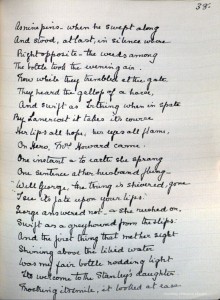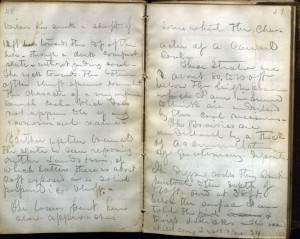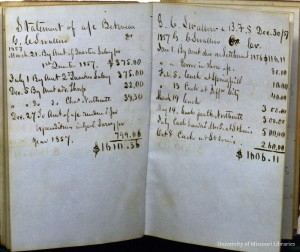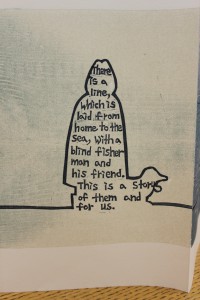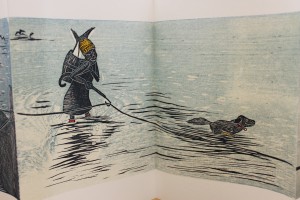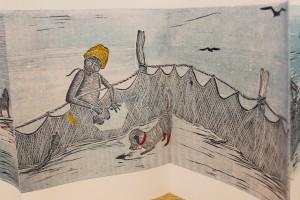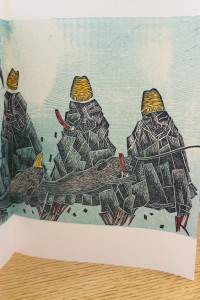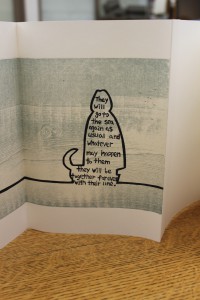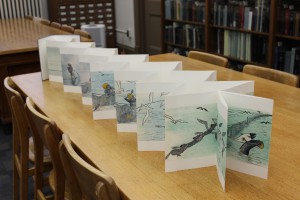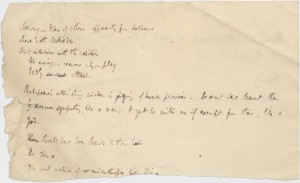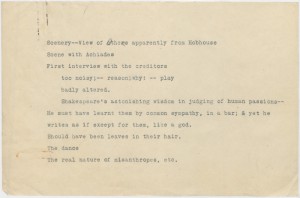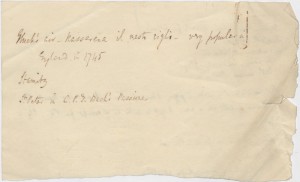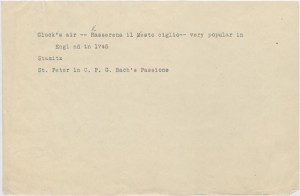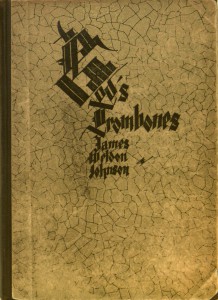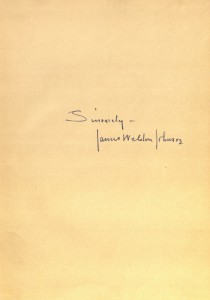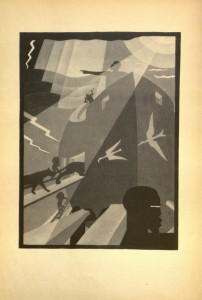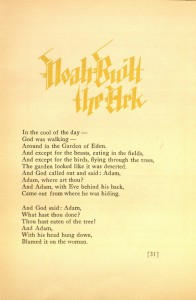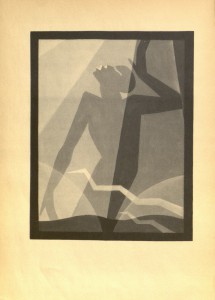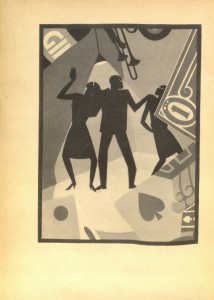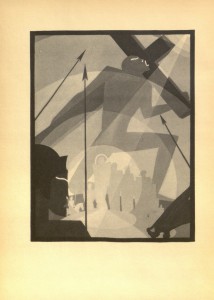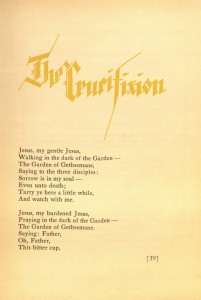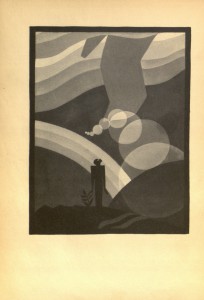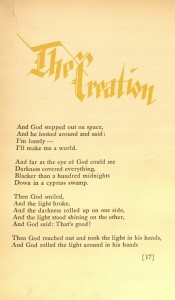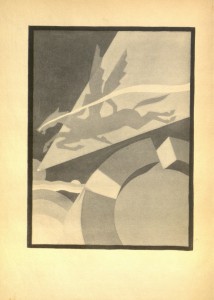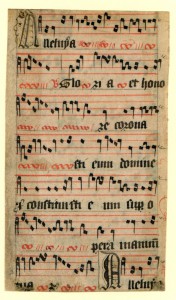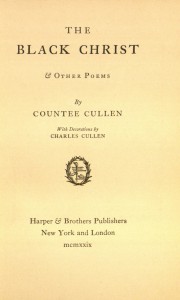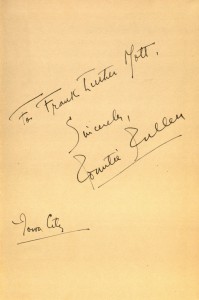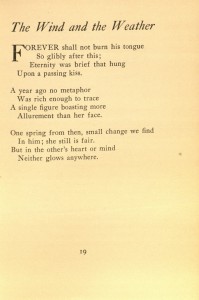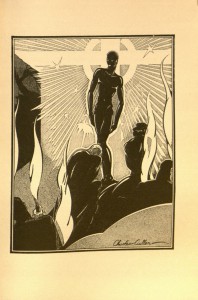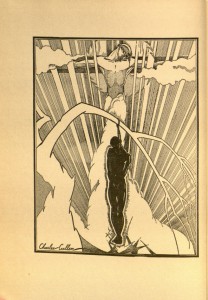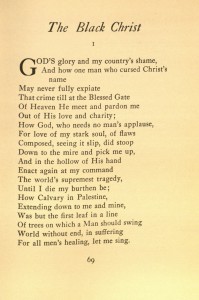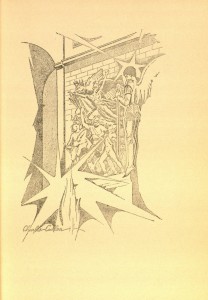In honor of St. Patrick's Day, this week's manuscript is by Stopford Brooke, an Irish writer whose humorous poem, "The Bottle," is now part of the Mary Lago Collection. While on a picnic with George and Rosalind Howard, Earl and Countess of Carlisle, Brooke threw a wine bottle into a pond at Hampton Court Palace. The Howards became obsessed with sinking the bottle, but failed to do so.
Special Collections and Archives
Mizzou Superhero Challenge
Bejamin Franklin Shumard’s field notebooks
This week's manuscripts are the field notebooks of Benjamin Franklin Shumard. Shumard and G.C. Swallow (the namesake for Swallow Hall) completed a geological survey of Missouri in 1855-1858. The notebooks were donated to the MU Libraries by a relative, Miss Shumard, in 1910.
Shumard was a medical doctor who focused on geology for the first part of his career; working in various states on geological surveys beginning in 1846. In 1858, he left Missouri for Texas, but he returned in 1860 and lived in St. Louis until his death in 1869. He was a professor of obstetrics at the University of Missouri medical school (located in St. Louis at the time) and president of the St. Louis Academy of Science. (From the Handbook of Texas Online)
We're not sure to what extent these notebooks have been published. Shumard left the Missouri Geological Survey before the work was completed, but his observations are noted in later publications. There are papers relating to Shumard's work at the Missouri State Archives, the Missouri State Historical Society, and the Texas State Archives.
New Acquisition! A Line by Suyeon Kim
We recently purchased an artist's book entitled A Line by Suyeon Kim. A Line tells the story of a blind fisherman and his dog through linocut and woodcut illustrations, using very few words. The images form a continuous strip of narrative, over sixteen feet long, which is accordion folded into the binding. Special Collections has copy number 83, signed by the artist.
Teaching Spotlight : Johanna Kramer
Energetic, youthful, admired by her students, Professor Johanna Kramer is our guest for the month of March.

Professor Kramer, please, tell us about yourself.
I am an assistant professor in the English Department. My area of specialization is Anglo-Saxon literature and culture. In my research I am most interested in Old English religious literature, especially homilies and saints’ lives, the transmission of patristic theology into vernacular poetry and prose, and popular religious texts and practices.
My first book, Between Earth and Heaven: Liminality and the Ascension of Christ in Anglo-Saxon Literature, a study of the ways in which the theology of the Ascension is taught and visualized in a wide range of Anglo-Saxon texts, will be published at the end of March by Manchester University Press.
At MU, I teach classes that concern the early Middle Ages, Anglo-Saxon England, and the history of English, for example, Women in the Early Middle Ages, World of the Vikings, Introduction to Old English, and History of the English Language as well as graduate seminars on various topics in Anglo-Saxon and other medieval literature.
How did you incorporate Special Collections into your teaching?
I take almost all of my undergraduate classes for visits to Special Collections. I take my students so that they can have at least minimal exposure to actual medieval materials. I want them to see what different types of medieval manuscripts look like (liturgical, biblical, philosophical, etc.), get a basic sense of manuscript production (both codicology and paleography), and recognize different writing surfaces (papyrus, parchment, even clay). Since I teach in an area—medieval literature—in which primary sources in their original form are not very accessible to students, showing them some of the wonderful materials we have at SC is a small way in which I can have students share the same space and even get in physical contact with manuscripts that were produced a thousand or more years ago. This way, students also become more alert to the fact that the original formats in which we find texts are radically different from the neatly edited and translated versions that students read in class. Aside from seeing what various medieval codices and scripts look like, students get the opportunity to see some of the beautiful illuminations and other depictions that accompany texts, be it a whimsical decoration of an initial, a miniature showing a biblical scene (like the Ascension at the opening of Acts), or a woodcut in an early printed book (like the cityscape of Nürnberg).
What outcomes resulted from your class visits? What were the effects on your students?
Students are typically blown away by what they see. The immediate encounter with medieval manuscripts really opens up their perspective of what “a book” is or looks like. Students tend to be especially intrigued by items that get them close to the human side of manuscript production. Thus, for example, many students love the notarial registry (La Turade), a well worn, leather-bound notebook with lots of professional notarial entries in varying scripts made at different times. Students may have a sense of elaborately decorated medieval manuscript, but the quotidian nature of an item like this registry is exciting on a different level and connects students on a more human level across a vast gap in time to the individuals who were originally writing these texts. Similarly, therefore, they love seeing marginal notes or little pointing hands drawn in the margins of manuscripts where medieval readers took note of remarkable passages (which makes students think twice about what they might write into the margins of their own books!). Another aspect that always impresses students is the sheer materiality of manuscripts. Seeing hair follicles and the remnants of veins in parchment, feeling parchment—both the silky, paper-thin kind and the thick, rough, and stiff kind—noting holes in the parchment, all of these aspects speak to the physical nature of the making of a book and the “live” origins of its component parts.
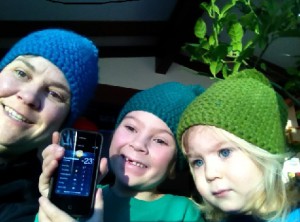
What advice would you give to faculty or instructors interested in using Special Collections in their courses?
There might be some hesitation to take a class to SC when an instructor does not expect the students to do a particular project or use specific holdings. In my view, there is always a benefit of taking students, whether a research project follows or not. Exposing students to resources that are unfamiliar to them is a valuable service we provide through our teaching. Equally, in my classroom instruction, I introduce students to select scholarship in my field, whether they end up incorporating it in a paper or not. Just knowing that this kind of scholarship exists and knowing that one could be interested in it and get excited about it is worthwhile demonstrating to our students. It’s part of our responsibility as teachers and scholars to model such interest and excitement for our students, and we can do that by showing them the widest possible range of resources, including the wonders of SC.
Teaching Spotlight: Rebecca Mouser
Dr. Rebecca Mouser, a Postdoctoral Fellow in the Department of English is our guest for the Teaching Spotlight this month.
Could you tell us a bit about yourself?
I am a postdoctoral fellow in the English department. My research focuses primarily on oral tradition in the Middle Ages; my recent dissertation explores oral tradition in the fourteenth-century alliterative romances such as Sir Gawain and the Green Knight and the Morte Arthure. Outside of my studies, I mostly spend my time with my two dogs, Isabelle (a Boxer) and Hermann (a German Shepherd).

While at MU, I have taught several literature courses, including English 1210 (Introduction to British Literature), English 2100 (Writing about Literature), English 3200 (British Literature: Beginnings to 1784), and English 4210 (Medieval Literature: The Age of Chaucer).
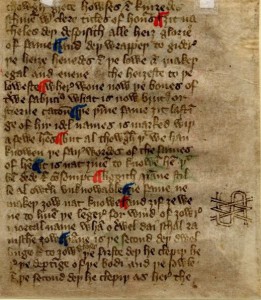
Chaucer's Boece, Fragmenta Manuscripta # 150,
In each of these courses, I stress the material culture of the various time periods as well as the historical and literary culture. We often discuss oral tradition and the development of literary texts. My hope is that students can see that the text goes beyond the page, and that the artifacts that survive can help us to interpret that larger text.
What materials or collections did your students work with?
My students usually view and work with a variety of manuscripts from the twelfth through fifteenth centuries. We discuss the development of various writing materials such as parchment as well as the various inks used. The manuscripts are both individual leaves of parchment and codices. I tend to bring my students to view the material culture of the Middle Ages (pre-16th century).
What outcomes resulted from you class visits? What were the effects on your students?
During my last visit to Special Collections, my students composed essays about the experience. Many of them stated that seeing the actual manuscripts helped them to conceptualize the Middle Ages as an actual place in time rather than an abstract idea of pastness. They really enjoyed learning about various ingredients used for ink as well. One student in particular chose a final writing project where she could work with digital manuscript images in her exploration of the idea of “fate” in Chaucer’s works. Overall, most of my students are excited about the experience and express the desire to return at some point on their own.
What advice would you give to colleagues interested in using Special Collections in their courses?
I think that the most important advice I would have is to take students to Special Collections, even if you are not yet sure of what you hope they will discover. The librarians are extremely helpful in setting up the session, providing ideas for what materials to view as well as brainstorming assignments. I always provide my syllabus before the session to help them to cater to my class.
Leigh Hunt letters
Leigh Hunt was a poet, journalist, and essayist who was influential among the Romantic poets, including Byron, Keats, and Shelley. Special Collections has a small collection of Leigh Hunt's correspondence dating 1823-1959, with the bulk of the material falling between 1831 and 1861. The collection contains letters to and from various correspondents, including Leigh Hunt's oldest son, Thornton. A large portion of the correspondence consists of transcribed letters, for which the originals are lacking.
These materials are in the process of being digitized. We're sharing a few scans below; look for the rest in the MU Digital Library soon.
God’s Trombones by James Weldon Johnson
This month's final post in our series celebrating African-American artists and writers brings together two greats of the Harlem Renaissance: James Weldon Johnson and Aaron Douglas. Johnson was multi-talented: an educator, writer, attorney and musician, he was the author of "Lift Every Voice and Sing," a leader of the NAACP, and the first African-American professor at New York University. God's Trombones is considered one of his most important works. Douglas was one of the leading artists of the Harlem Renaissance. He developed a distinctive style that blended modernism with African influences and was highly influential in the development of later African-American artists.
A fragment of a fifteenth-century gradual
The Fragmenta Manuscripta collection is again the source of this week's feature. It's a fragment from a fifteenth-century gradual in Latin, possibly from England. Note the square musical notation on a four-line staff. The staff here agree that we particularly like the face in profile added to the large initial. More information at the Digital Scriptorium.
The Black Christ by Countee Cullen with illustrations by Charles Cullen
This post is the third in our series highlighting the work of African-American artists and authors in Special Collections. Countee Cullen was one of the leading poets and intellectuals of the Harlem Renaissance. This book of poetry, published at the height of his career, examines the relationships between faith and injustice. Cullen draws parallels between the suffering of the crucified Christ and the suffering of African Americans in the climate of racial violence that characterized the 1920s. The copy in Special Collections is inscribed by Cullen to Frank Luther Mott, who was Dean of the School of Journalism from 1942 to 1951.
